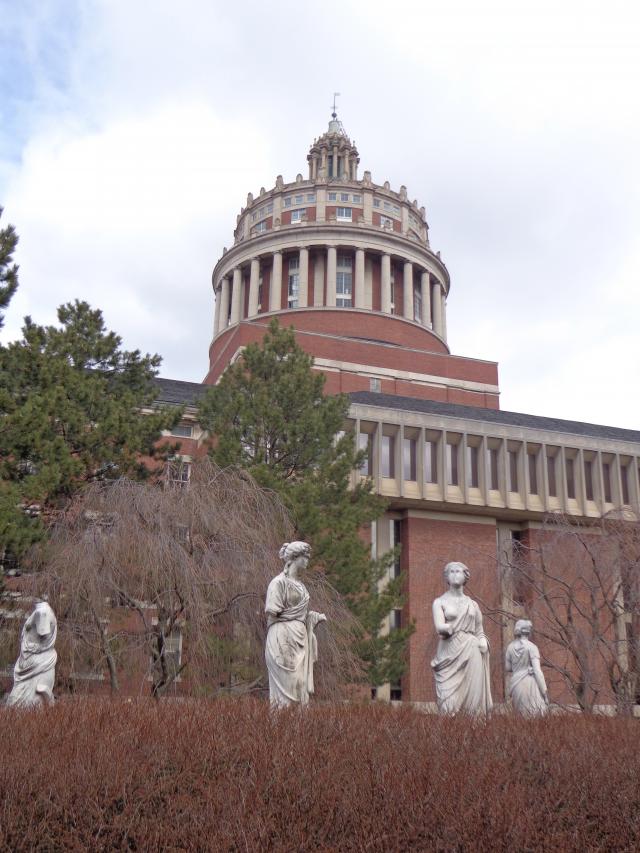Have you ever been to a museum? If you answered yes, and depending on the kind of museum, you may recall the colossal statues, ancient manuscripts, worn out military apparel, century-old guns/rifles that will probably miss a target a few inches away, or even some old equipment which would give you a sense of what technology was like many years ago. You may also remember the tour guides telling stories regarding the artifacts you go to see. These artifacts represent stories that beg to be told. This is also true for monuments.
Perhaps you would agree that monuments aren’t found only in museums. They can be found on college campuses too. This would resonate with some of us during our college “prefrosh” days when, as prospective students, we visit college campuses to get an understanding, however nascent, of the soil on which our next four years will be spent.
At Rochester, I toured the River Campus and learned about the statues, buildings, open spaces and some of the campus’s other monuments. As it were, Rochester is itself a megalopolis with the buildings so far apart that you can’t get from one end to the other without taking a cab. At times, I feared I would miss a class/event/appointment because I couldn’t find my way to the venue.
However, as I write, this once ginormous campus now appears so within reach. As a current student, I decided to tour the campus again (not that I haven’t inadvertently been doing so by walking to class and attending events over the past three years). This time, I came across some monuments I literally haven’t taken a second look at since i first saw them.
The “Meliora Madams”

The first are four statues commissioned in Italy in 1874 by Hiram Sibley, an industrialist, entrepreneur, philanthropist and a trustee of the University. These statues once graced the University’s Prince Street campus and were intended to represent geography, astronomy and navigation. They are also a reunion gift from the University’s Class of 1954.
President Anderson’s Statue

Second is a statue of Martin Brewer Anderson, the University’s first president who served from 1853 to 1888. This statue stands somewhat between the Crosby and Burton halls and was erected by alumni and residents of Rochester in 1904. Having lived in Crosby Hall during my sophomore year, I am amused to say that I never really paid that much attention to this one.
Athena and Industry in the Rush Rhees Library

Finally, there are two statues found on the same floor as the periodical reading room in the Rush Rhees Library. They are both female figures, some distance apart, and leaning slightly against some sort of wheel and a serpent. I have yet to find what these statues represent.
(You can learn more about these statues and other campus landmarks at the River Campus Libraries page.)
I am glad to have learned about these monuments. Certainly, this gave me the chance to relive my pre-freshman days. Thanks for reading.

